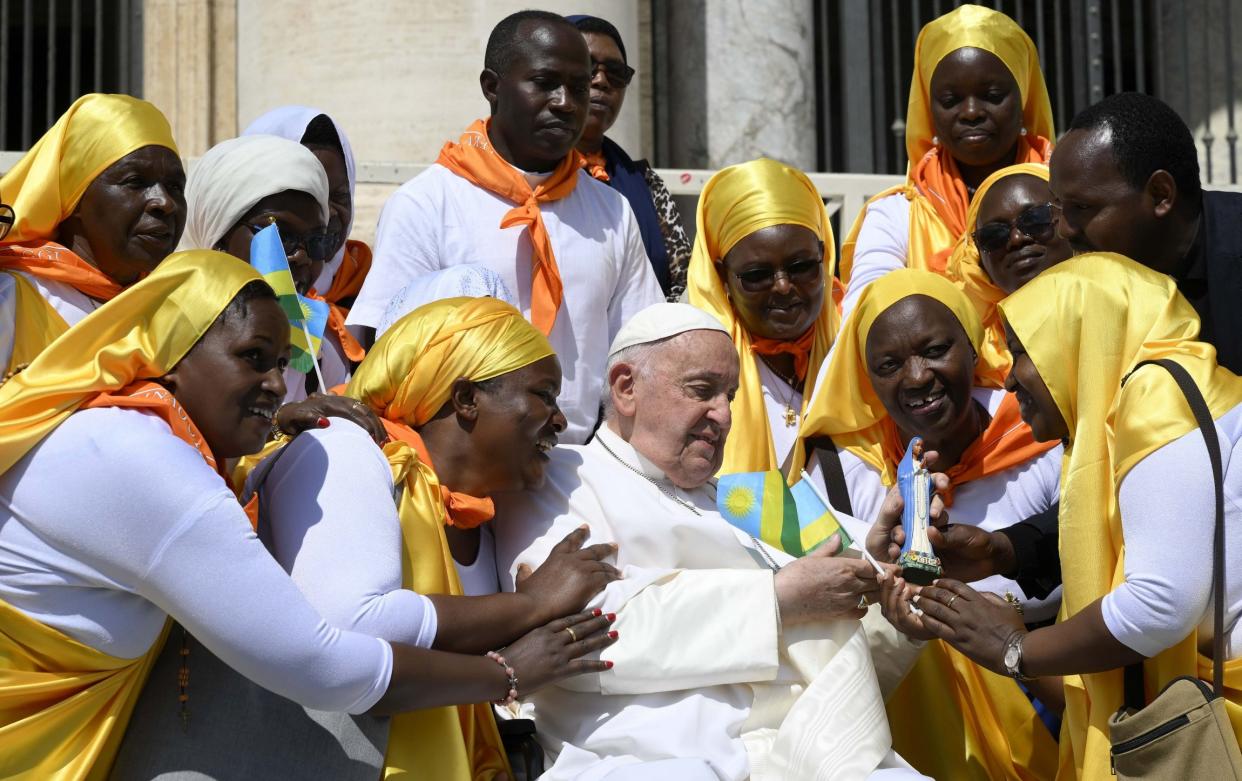Vatican tightens rules on apparitions to thwart social media hoaxers

- Oops!Something went wrong.Please try again later.
The Vatican has tightened its rules on verifying supernatural phenomena in an effort to stop the Catholic faithful from falling for religious hoaxes.
Alleged sightings of the Virgin Mary, weeping statues and crucifixes dripping blood are among reported spiritual occurrences that the Church said only the Pope can validate.
A document released by the Vatican’s doctrinal office and countersigned by Pope Francis aims to stop hoaxers from exploiting the gullible and profiting from their claims.
The age of social media has led to an escalation of alleged sightings, with Pope Francis casting scepticism on their validity.
In an interview with Italian broadcaster, RAI TV, last year he said that Virgin Mary apparitions were “not always real”.
The Vatican document, which updates previous 1978 rules, said any claims of supernatural sightings or other phenomena should be assessed cautiously because of their potential to con people for money or power.
“The use of purported supernatural experiences or recognised mystical elements as a means of or a pretext for exerting control over people or carrying out abuses is to be considered of particular moral gravity,” it said.
The Catholic Church has had a long history of people claiming to have seen the Virgin Mary, of statues weeping tears of blood and stigmata that mimic the bodily wounds of Christ.
Sites such as Lourdes in France and Fatima in Portugal, where apparitions of Mary have been officially recognised by the church are now visited by millions of pilgrims.
But in a recent case in Italy, a bishop in Trevignano, on the shores of Lake Bracciano north of Rome, was forced to declare alleged apparitions of Mary bogus and ordered the woman at the centre of the claims to end her monthly gatherings, which were drawing the faithful from all over Italy.
Prominent church figures who claimed to have experienced stigmata, such as the late Italian priest Padre Pio, and Pope Francis’ namesake, St Francis of Assisi, have inspired millions of Catholics, although the authenticity of their claims are still fiercely debated.

